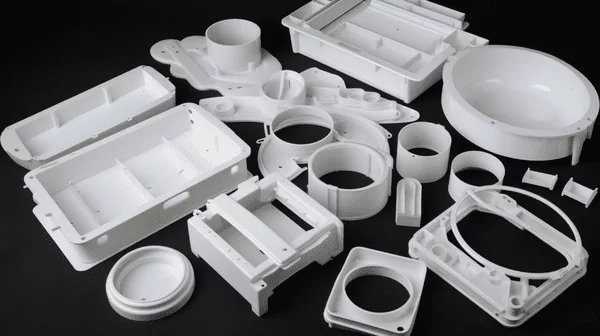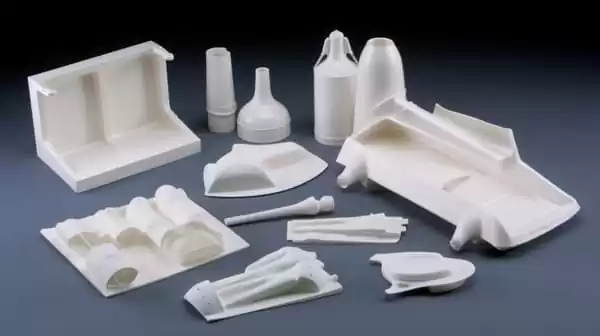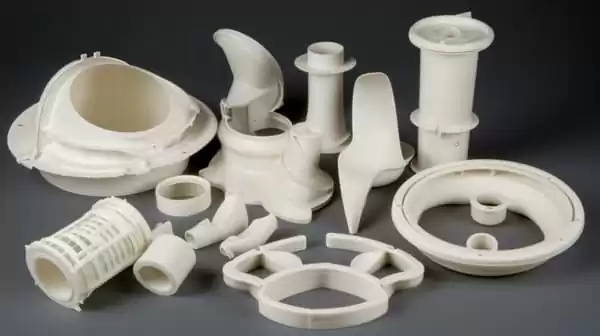Introduction
Vacuum forming is a manufacturing process used to transform plastic sheets into various shapes and sizes. This technique makes vacuum forming involves heating a sheet of plastic until it becomes flexible before using vacuum pressure to form it into its desired form. It has wide applications in industries like automotive, medical, and consumer products production.
Vacuum forming has an incredible value in manufacturing processes that cannot be overstated. It is an efficient and cost-effective means of mass-producing plastic parts and components without waste; furthermore, vacuum forming offers designers and manufacturers an avenue to produce intricate parts with minimum waste.
Following are details on the vacuum forming process, including required materials and equipment, steps in its execution, and any potential advantages or disadvantages of vacuum forming.
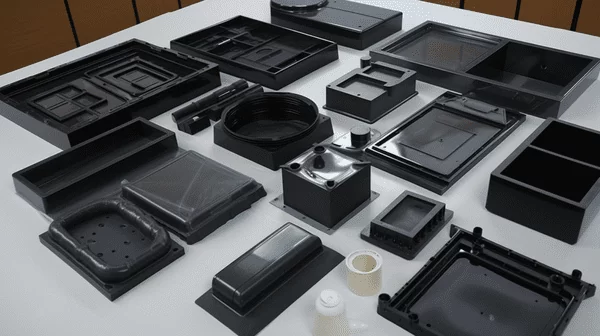
II. What is Vacuum Forming in Plastics?
Vacuum forming is a manufacturing process in which plastic sheet material is heated until it becomes malleable, then using vacuum pressure to shape it into desired shapes. Simply put, this means heating until it is soft enough for shaping over a mold before applying vacuum pressure to force its conformance with it. Once this has cooled and hardened, the mold can be removed and the finished part or component trimmed and finished as required.
One of the greatest advantages of vacuum forming is its cost-efficiency. Requiring relatively minimal equipment, this process enables manufacturers to produce large volumes quickly and cost-efficiently - not to mention its adaptability as it can produce parts in various complex fabricated sheet metal sizes and shapes.
However, vacuum forming does have some drawbacks. One major disadvantage of the process is its limitation in terms of material thickness available for use; thicker materials may be difficult to form using vacuum pressure alone and may require other methods like pressure forming for their formation. Furthermore, vacuum forming may leave parts with uneven wall thickness which compromises their strength and durability.
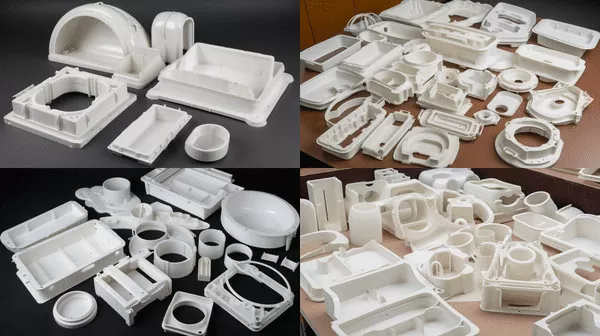
Vacuum forming can often be more cost-effective for producing small to medium-sized parts compared to injection molding; the latter method excels at producing mass quantities with greater precision and consistency.
Vacuum forming is an extremely flexible and cost-efficient means of producing plastic parts and components, particularly at lower to mid-scale production volumes.
III. How to Vacuum Form Plastic Step by Step
To vacuum from plastic, you will need several materials and pieces of equipment. Here is a list of what you will need:
Materials:
- Thermoplastic sheet
- Mold release agent (optional)
Equipment:
- Vacuum forming machine
- Heating source (typically ceramic heaters or radiant heaters)
- Vacuum pump
- Clamp frame
- Molds or forms
- Trimming tools (e.g. saw, knife)
Step 1: Preparing the Plastic Sheet The plastic sheet should be cut to the desired size and shape using a saw or knife. It is important to ensure that the sheet is clean and free from debris or dust. If necessary, apply a mold release agent to the sheet to prevent the plastic from sticking to the mold.
Step 2: Heating the Sheet The sheet of plastic is then heated to its forming temperature using a heating source. The heating source is usually ceramic heaters or radiant heaters, which provide even heating across the surface of the plastic sheet. The temperature required will vary depending on the type of plastic used and heated sheet, but generally falls between 300 and 400 degrees Fahrenheit.

Step 3: Forming the Plastic Sheet Once the sheet has reached the required temperature, it is placed over the mold or form and secured in place with a clamp frame. The vacuum forming machine then applies vacuum pressure to the mold, pulling the plastic sheet tightly around it and forming it into the desired shape. The vacuum pressure is typically maintained for several seconds until the plastic has cooled and hardened.
Step 4: Trimming and Finishing the Part After the plastic has cooled and hardened, it is removed from the mold and excess material is trimmed away using a saw or knife. The finished part can then be sanded, painted, or otherwise finished as desired.
Overall, vacuum forming is a relatively simple process that can be used to produce a wide range of plastic parts and components. With the right materials and equipment, it is possible to create highly precise and intricate shapes with minimal waste.
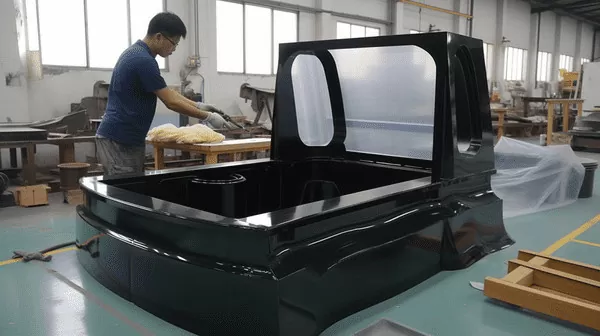
IV. Materials Used in Vacuum Forming
Vacuum forming can utilize many plastic material, including:
Acrylonitrile Butadiene Styrene (ABS)
High Impact Polystyrene (HIPS),
Polyethylene Terephthalate Glycol (PETG),
Polycarbonate (PC)
Polypropylene (PP).
Polyvinyl Chloride (PVC)
The best material for vacuum forming depends on your application and desired properties of the finished part. Thicker materials tend to be more difficult to form using vacuum pressure alone and may require other methods like pressure forming; however, thicker gauge parts often offer increased durability and strength compared to their thinner gauge counterparts.

Thin gauge parts, on the other hand, are easier to form using vacuum pressure and may offer greater flexibility and cost-effectiveness. When selecting materials suitable for manufacturing thin gauge parts these must match both manufacturing processes as well as the required properties of finished parts.
Overall, vacuum forming is a versatile manufacturing process capable of working with an extensive array of plastic materials - its selection will depend on your intended application and desired properties for the finished product.
V. Industrial Vacuum Forming Machines
Industrial vacuum-forming machines come in a variety of types and sizes. Some of the most common types include:
Single-station machines:
These machines are designed to produce a single part at a time and are ideal for small to medium production runs.
In-line machines:
In-line machines are designed for high-volume production and are capable of producing large quantities of parts quickly and efficiently.
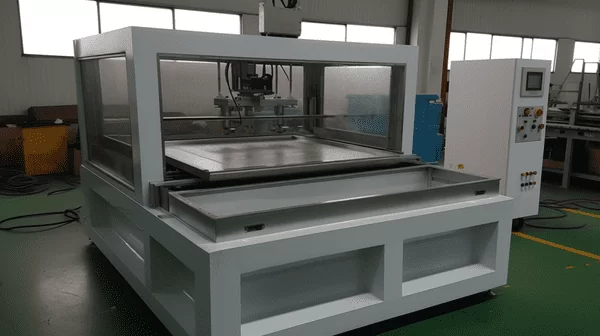
Shuttle machines:
Shuttle machines are designed to produce large parts or parts with complex shapes. They are also useful for producing multiple parts at once.
Rotary machines:
Rotary machines are designed to produce cylindrical or conical parts and are typically used in the production of items such as cups and containers.
Features and capabilities of industrial vacuum-forming machines vary widely, depending on the specific model and manufacturer.
Some common features include:
- Multiple heating zones for even heating of the plastic sheet.
- Adjustable forming temperature and vacuum pressure for precise control over the forming process.
- Computer controls and programmable settings for consistent and repeatable results.
- Multiple mold sizes and shapes for versatility in part production.
DIY vacuum-forming machines are also available for hobbyists and small-scale production. These machines are typically smaller and less expensive than industrial machines and may be constructed using off-the-shelf components such as a vacuum pump and heating source. DIY vacuum-forming machines can be used for producing small quantities of parts for personal projects or small businesses. However, they may not be as precise or consistent as industrial machines and are generally not suitable for high-volume production.
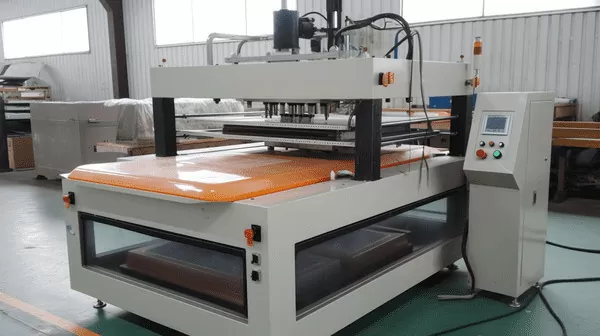
VI. Vacuum Forming Services
Vacuum forming services offer a range of services related to vacuum forming plastic parts and components for manufacturing purposes. Examples of such services may include:
Design assistance and engineering support, material selection and sourcing assistance, prototyping/small-scale production runs, large production runs as well as custom mold-making capabilities are among the many services we offer at PSE Group.
Secondary operations, including trimming and finishing.
Vacuum forming services offer numerous advantages when used for manufacturing purposes, including:
Cost-Effective Solutions:
Vacuum forming services can offer more cost-effective solutions compared to in-house manufacturing since they have access to the equipment and expertise needed for producing parts at scale.

Expertise:
Be sure to assess how experienced and knowledgeable a service is regarding the vacuum forming material for your industry or application.Make sure your service can produce the number of parts required, whether for small- or large-scale production.
Customization:
Vacuum forming services provide high levels of customization for parts and components, by producing customized molds and vacuum forming tools, tailored to specific design specifications.
When selecting a vacuum forming service, there are several factors to keep in mind, including:
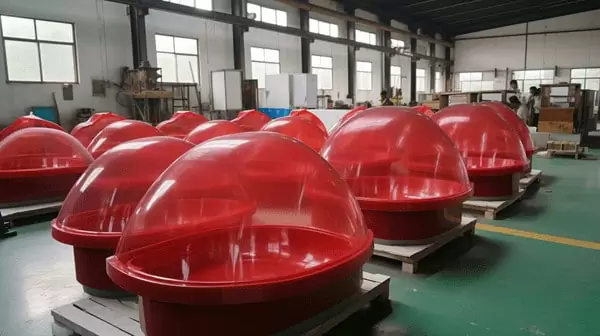
Quality:
Find a provider with a proven record in manufacturing top-quality parts and components.
Experience:
Be sure to assess how experienced and knowledgeable a service is regarding the vacuum forming material for your industry or application.
Make sure your service can produce the amount of parts required, whether for small- or large-scale production.
Cost:
It is essential to compare pricing and quotes from various services to ensure you are receiving an equitable cost for the level of service and quality offered.
Overall, vacuum forming services provide an economical and effective way of producing plastic parts and components. When selecting one for yourself it's essential to consider factors like quality, experience, capacity, and cost as part of the decision-making process.
VII. Vacuum Formed Products
Vacuum-formed products can be found across industries and applications. Here are some examples of vacuum-formed products:
Automotive parts include interior trim components, door panels, and exterior body panels.
Medical Equipment:
Instrument trays, bed pans and housings for medical equipment.
Consumer goods:
Packaging, storage containers and cosmetic cases.

Electronics:
Housings for electronic devices, control panels and bezels.
Aerospace offers aircraft interior components
ooverhead bins and seat components, that make up their cabin interiors.
Vacuum-formed products are used across a range of industries and their significance cannot be understated. From cost-efficient plastic part production to producing complex shapes with complex contours that would be hard or impossible to produce using other methods, vacuum forming has proven its worth as a method of production.
Vacuum-formed products have become an indispensable component of manufacturing processes across a range of industries including automotive, medical, consumer goods, and aerospace. Their ability to quickly produce large volumes of parts has cemented vacuum forming's position as an integral part of their respective manufacturing processes.
Vacuum-formed products are an indispensable asset to multiple industries, providing an economical yet efficient means of producing high-quality plastic parts and components.
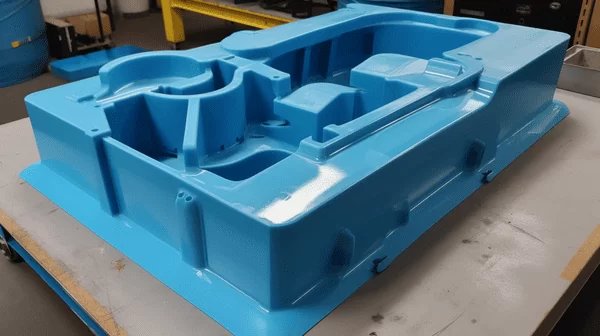
Conclusion
Vacuum forming is an extremely cost-effective and versatile method of producing plastic parts and components, often found in automotive, medical, consumer goods, and aerospace applications. It involves heating a sheet of plastic until it softens enough for manipulation under vacuum pressure before shaping it into desired shapes using vacuum pressure. Vacuum forming has widespread applications throughout many industries including automotive, medical, consumer goods, and aerospace production facilities.
Vacuum forming should be noted for its cost-effectiveness, versatility, and ability to produce complex shapes and contours. Though vacuum forming does have some restrictions such as its maximum material thickness limit, it remains an invaluable manufacturing process when producing plastic parts and components.
Vacuum forming will remain an integral component of manufacturing in the future, thanks to advances in technology and materials that make its use even more cost-effective and efficient. Demand for plastic parts across various industries should also drive continued expansion for vacuum-forming services.
Vacuum forming is an invaluable manufacturing process, offering numerous advantages when producing plastic parts and components. From its versatility and cost-effectiveness to producing complex shapes, vacuum forming has quickly become an indispensable element of many industries - now and into the future.

